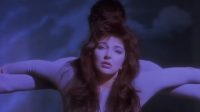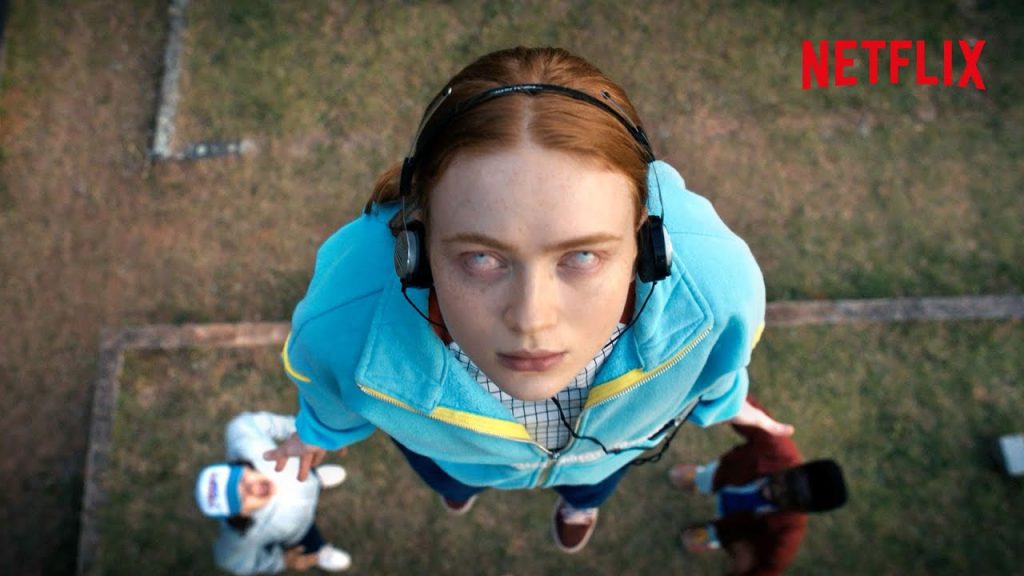
In case you missed it, Kate Bush’s 1985 sonic masterpiece was used as a plot device in Stranger Things, receiving multiple spins throughout the entire fourth season of Netflix’s hit sci-fi series, set in the ‘80s.
‘Running Up That Hill’ – which features insistent, galloping, ‘80s-style drum beats and something Kate played on her Fairlight synth that sounds like tuneful sea lions mating – clearly wowed new generations of fans while also reminding actual ‘80s kids of its brilliance.

After Stranger Things aired, a gazillion sets of ears rushed to stream ‘Running Up That Hill’ and revisit this 65-year-old British alt-pop trailblazer’s astonishingly brilliant back catalogue. Now the song’s charting its head off globally. As is Kate’s career-defining fifth album Hounds Of Love’, which features the track.
Oh come on, darling. Let Kween Kate soak up the belated recognition (and 100% royalties) she so richly deserves!
Running Up That Hill’s encore global chart run
When it was first released in 1985, ‘Running Up That Hill’ reached #3 on the UK charts, #30 in the US and in #6 Australia. Nearly 40 years later, this galloping, suspenseful masterwork has rocketed up the global charts, usurping its original chart positions to peak at #2 in the UK, #8 in the US (Top 10 for the first time!) and #1 in Australia/NZ.
Kate’s sole ownership of her master recordings equals big streaming bucks
Because Kate started her own record label, she’s maintained sole ownership of her master recordings throughout the course of her career. She receives 100% of her royalties, whereas these are usually split between assorted songwriters, record labels etc. ‘Running Up That Hill’s resurgence in popularity has already seen Kate collecting millions in streaming royalties alone.
The inspo behind ‘Running Up That Hill‘
Kate explains the meaning behind ‘Running Up That Hill’: “I was trying to say that, really, a man and a woman can’t understand each other because we are a man and a woman. And if we could actually swap each other’s roles, if we could actually be in each other’s place for a while, I think we’d both be very surprised!”
Before Stranger Things, ‘Running Up That Hill’ GLOW-ed
Before the Stranger Things sync sent the world gaga over ‘Running Up That Hill’, the song was synced to a pivotal scene in Season 3, Episode 9 (The Libertines) of GLOW: a much-lower-budget American comedy-drama series based around the women’s professional wrestling circuit.
Cloudbusting soundtracked The Handmaid’s Tale
Also from Kate’s ‘Hounds Of Love’ record, the exquisite ‘Cloudbusting’ is used to spectacular effect during the final moments of Season 3, Episode 11 of The Handmaid’s Tale before playing out through the end credits. You’d actually swear the director timed the action to perfectly complement ‘Cloudbusting’s specific lyrics and surging crescendos.
Kate plays a young boy in ‘Cloudbusting’ clip
Like Kate’s smash hit single ‘Wuthering Heights’, ‘Cloudbusting’ was inspired by literature – Peter Reich’s memoir A Book Of Dreams, which documents Reich’s doting relationship with his inventor/psychoanalyst father Wilhelm. In ‘Cloudbusting’s accompanying clip – conceived by Terry Gilliam and directed by Julian Doyle – Kate plays the central figure of Peter, as a young boy, while Donald Sutherland co-stars as Wilhelm.
Fun fact: The story goes that Kate knocked on the door of Sutherland’s suite at London’s Savoy Hotel and personally invited him to star in her Cloudbusting clip.
Kate was a stoner back in the day
Of the shoot, Sutherland recalled due an interview: “I remember the first morning on set seeing her coming out of her trailer smoking a joint, and I cautioned her, saying she shouldn’t smoke that, it’d affect her work, and she looked at me for a second and said she hadn’t been straight for nine years, and I loved her.”
Peter Gabriel gave Kate the Fairlight CMI that elevates ‘Hounds Of Love’
During the Kate Bush-featuring short doco, Queens Of British Pop, Peter Gabriel – who generously gifted Kate the Fairlight synth she used to create ‘Hounds Of Love’ – says: “I think she was one of the first female artists that sort of started a creative community around her, and controlled it and shaped it, really, and was just unafraid to experiment, for better and for worse.”
And let’s just take a coupla minutes out of our days to soak up the sublime Bush/Gabriel duet, Don’t Give Up, which still gives us chills to this day:
8 more reasons why Kate’s our kween
#1 The amount of autonomy and creative power Kate hustled for from the get-go was beyond unusual when she was coming up on the scene in the late ‘70s. Again, she solely owned her own masters!
#2 Kate also had to fight against the misconception that she was ‘just’ a singer: “People weren’t even generally aware that I wrote my own songs or played the piano,” she said during an interview. “The media just promoted me as a female body. It’s like I’ve had to prove that I’m an artist in a female body.”
#3 Around the time when EMI’s Bob Mercer personally signed Kate to the label, he has since shockingly admitted (in the TV series ‘Queens Of British Pop’): “There was literally a mantra at EMI: ‘Birds don’t sell’” – of the female not our feathery kind, obviously.
#4 Kate built a 24-track studio in the barn behind her family home so that she could record at her own pace.
#5 Aged just 19, Kate insisted on ‘Wuthering Heights’ as her debut single release even though EMI pushed for the more rock-oriented ‘James And The Cold Gun’.
#6 ‘Wuthering Heights’ topped the UK singles chart for four weeks in 1978, making Kate the first female artist to achieve a UK #1 with a self-written song. Kate’s debut outing also topped the ARIA Singles Chart here in Australia.
#7 For the ‘Hounds Of Love’ album release party, guests were invited to watch a laser show inside the London Planetarium while listening to a playback of the album in its entirety.
#8 Kate has produced all of her studio albums since 1982’s The Dreaming.
Bonus point: For the title track of ‘The Dreaming’, Kate drew inspiration from Indigenous Australians being driven from their sacred land as colonisers moved in to dig for ore.
Words by Bryget Chrisfield


